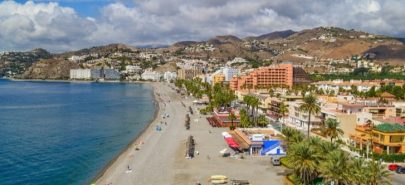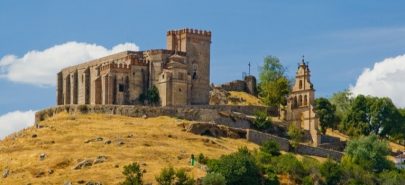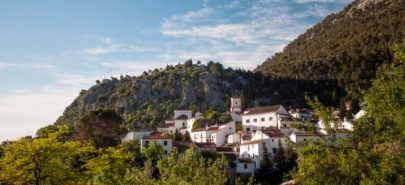Discover what to do in Setenil de las Bodegas, one of Andalucia’s most charming and unique white towns.
Setenil de las Bodegas is part of the engaging Route of the White Villages in Cadiz, being provided with a quaint atmosphere on its own. You may have seen its buildings under the rocks somewhere, as they are one of Andalucia’s most famous pictures.
The rocks are the main characters of the daily life in Setenil de las Bodegas. For centuries, Setenil’s inhabitants have lived in the caves protected by the rocks and, nowadays, this is Setenil’s most famous feature, making it one of the most appealing tourist destinations in the Sierra de Cadiz. It’s worth mentioning that the whole town was declared Conjunto Histórico-Artístico (Historic-Artistic Grouping) in 1985.
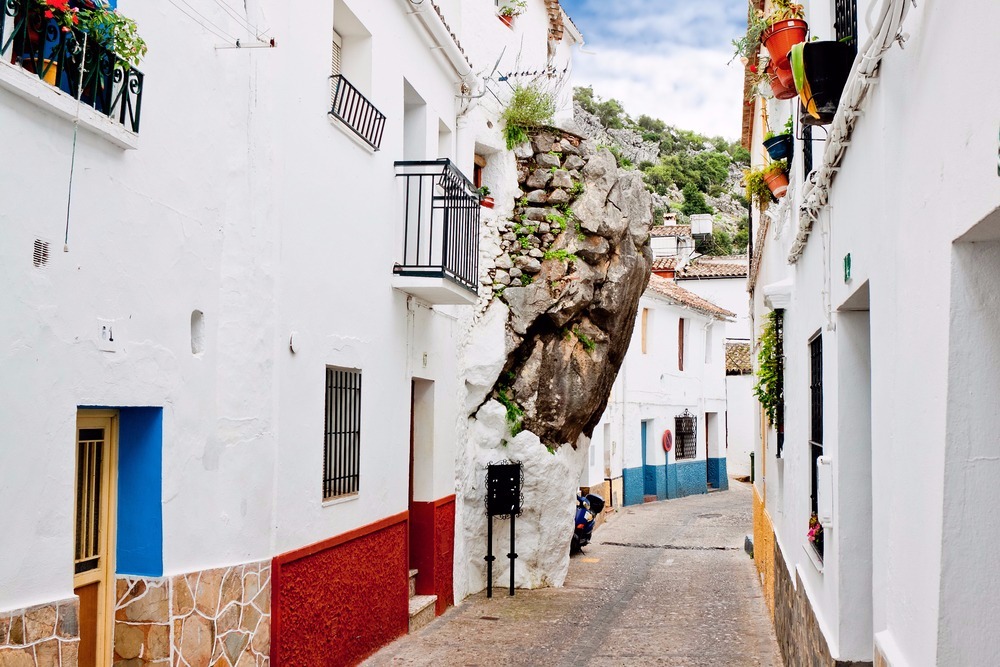
How to get to Setenil de las Bodegas
Setenil de las Bodegas is easily reachable by car from any white town in the province of Malaga and Cadiz.
To reach Setenil de las Bodegas from Malaga, which lies 97 km from the town, you will have to take the A-357 towards Ardales. Then take the A-367, which converts into MA-414 as you drive past Cuevas del Becerro. When it becomes CA-414, you’ll know you’re approaching Setenil. Take the roundabout’s third leading to CA-422, and you will soon reach Setenil de las Bodegas.
If you’re leaving from Cadiz (133km), you will have the chance to spot the countless white villages of the province during your trip to Setenil. Take the AP-4 that converts into the E-5 as it flanks the city of Jerez de la Frontera. Take the exit n. 80 towards A-382 and proceed along the A-384. The route then becomes A-374; you will have to take the N-342 after 2 km. 5 km and turn right into the CA-4406. The CA-4223 will lead you to Setenil de las Bodegas.
Although the best way to get to Setenil de las Bodegas is by car, you may also want to know that you can reach Setenil by train or bus as well.
History of Setenil de las Bodegas
The first traces of human presence in Setenil date back to the Neolithic Era. The Romans also had a colony in the nearby Laccipo. However, it is during the Arab kingdom that Setenil becomes fundamental in the history games. In fact, thanks to its location and the rocks surrounding it, it took seven sieges (the last being a 15-day siege in 1484) for the Catholic Monarchs to conquer the town. Speaking of which, legend has it that the name of Setenil comes from the Latin words “Septem Nihil” meaning “seven times nothing”. As a matter of fact, “de las Bodegas” means “of the wineries” and it refers to the vineyards that surround the town and the excellent wine that is produced here.
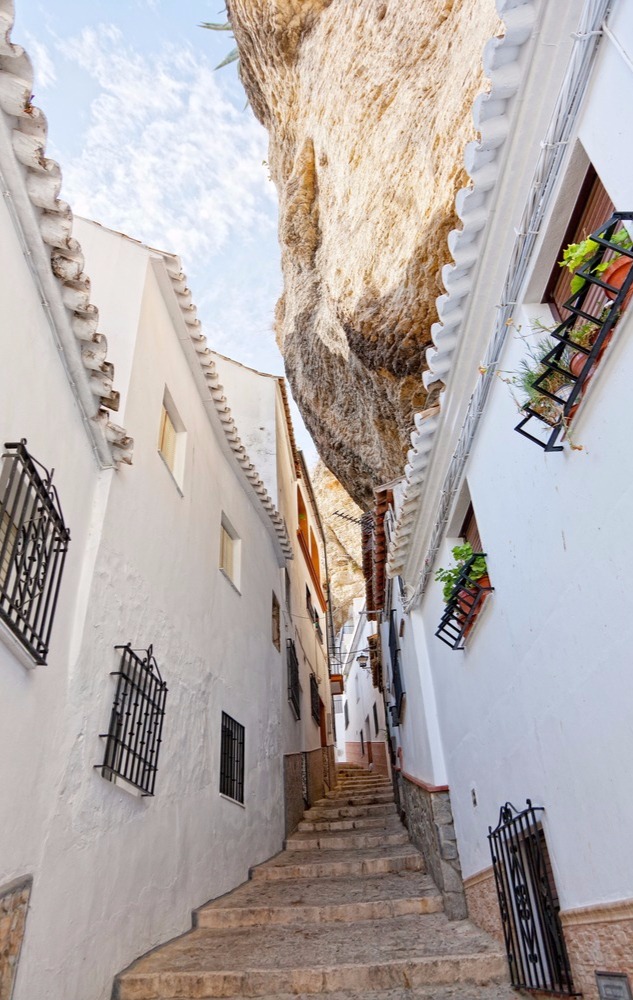
In the following centuries, Setenil enjoyed a privileged situation over the nearby towns, whose peak is the freedom obtained from the city of Ronda in 1630.
This mainly-agricultural town is now thriving with tourism, enhanced by the peculiarities of its land that call the attention of lots of visitors.
What to do in Setenil de las Bodegas
Soak up the authentic atmosphere of Setenil de las Bodegas. There are plenty of things to do and see and, despite the town’s small dimensions, you will need more than a few hours to do it all.
Wander through Setenil’s picturesque streets
Two of Setenil’s main streets are located on the two sides of the river Guadalporcún that crosses the town, creating the perfect spots to enjoy the views of the rocks. They are called Cuevas del Sol and Cuevas de la Sombra (respectively Caves of the Sun and Caves of the Shadow). Their name comes from the phenomenon created by the rocks that stand above the streets, which prevent the sunshine from warming up the Cuevas de la Sombra (whereas the Cuevas del Sol always enjoys light). During the cold winter season, in the Cuevas de la Sombra you can even see stalactites!
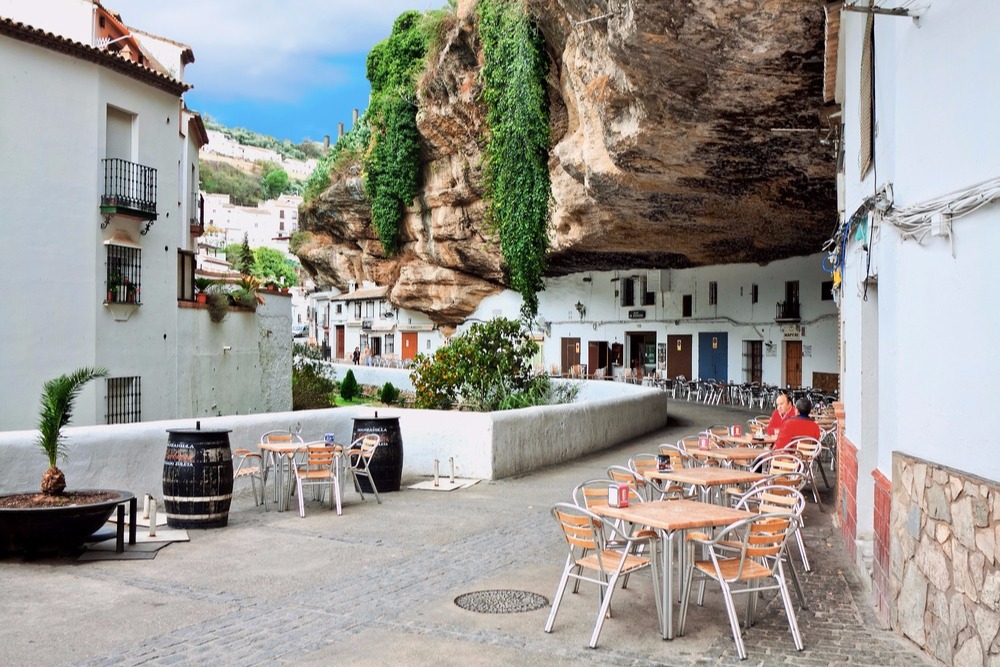
Likewise, you can’t miss out on Calle Herrería, located below the Arab fortress and leading to the central Plaza de Andalucía. If you’re in love, ask your partner to take a photo under the sign stating “Besame en este rincón” (kiss me in this corner) that is located in this street. More romantic than the Eiffel tower itself 😉
Discover the monuments and churches of Setenil de las Bodegas
Obviously, the most dazzling features of Setenil are the houses and buildings under the rocks. They’re known as “abrigos bajo las rocas” (shelters under the rocks), and that’s because they were actually built without carving the stones.
Among the monuments you should pay a visit to, the 12th-century Arab castle wins the first prize. Its imposing architecture overlooking the town was one of the factors that impede the fast conquest of Setenil by the Christians. The Torre del Homenaje and the castle well are the only parts that have survived the passing of time. The castle is reachable through the door of the Casa Consistorial (see below). Make sure to stop by the viewpoint of El Lizón, located near the Tower, for the views are awe-inspiring.
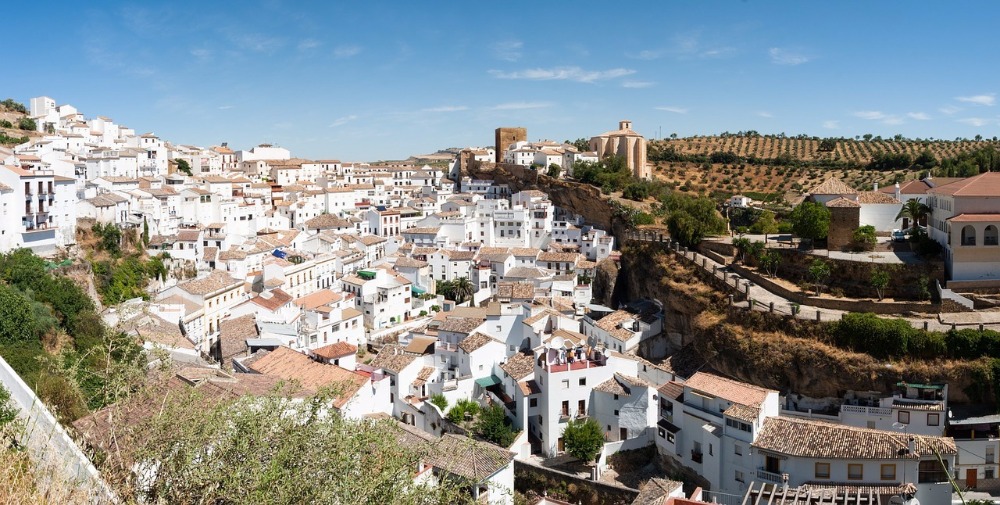
The nearby Iglesia de Nuestra Señora de la Encarnación is also worth a visit, as it is a rare combination of a Moorish and a Gothic church. If you want to discover more about the religious life in Setenil, don’t miss out on the hermitages spread all over the town. Among them, the 18th-century hermitage of Virgen del Carmen, dedicated to the patron saint of the town. The other patron saint, Saint Sebastian, has his own hermitage located on the outskirts of Setenil.
Engage in one (or all) of the appealing routes
As said before, Setenil is part of the charming Route of the White Villages in Cadiz province. However, if you are a nature lover, you’ll be happy to know that Setenil de las Bodegas is also provided with various other routes.
- Ruta de los Molinos (the Mills Route): a 6-km route connecting Setenil with the town of Alcalá del Valle. The name comes from two corn mills located along the Arroyo de Alcalá. The natural landscapes you will enjoy during this route are gorgeous and are provided with a mix of landmarks, such as rocky walls and steep cliffs.
- Ruta de los Escarpes del Río Trejo (the river Trejo’s Scarps Route): a 5-km route that goes from Setenil to Cortijo del Trejo, flanking the river Trejo and the magnificent landscapes created by the strength of the water flow.
- Ruta de los Bandoleros (the Bandits’ Route): this 11-km route leads you from Setenil to the ruins of Acinipo, near Ronda. It meanders through the area where the bandits used to raid. Interesting landmarks are the farmhouses, the river Guadalporcún and the Roman ruin of Acinipo.
- Ruta de la Cañada de Málaga (the Cattle Route of Malaga): this route helped Setenil make a name for itself among the businesses of Seville, Malaga and Ronda. It crosses with the ancient route of Osuna (known as Ruta del Viajero Setenil de las Bodegas).
Know the town through its gastronomy
All in all, one of the best (and most effective) ways to get to know the culture of Setenil de las Bodegas is through the cuisine. Setenil’s signature dish is the sopa cortijera (the Cortijera Soup) made of bread, olive oil, asparagus, and hard-boiled egg. Other mouth-watering specialities are sweet potatoes with honey, scrambled eggs with asparagus and blood sausage or mushrooms, rabbit “a la Serrana” and the delicious cured meat.
The Cuevas del Sol and Cuevas de la Sombra welcome many bars and restaurants, to rejoice in the delicious cuisine in a very picturesque environment.
Make the most of the celebrations in Setenil de las Bodegas
If you plan to visit Setenil, don’t forget to book your trip around the Holy Week, which has been declared Andalucia’s National Tourist Interest. The “Guerra de las Bandas” (Spanish for “War of the Bands”) used to take place between the two brotherhoods of Setenil, the Santa Vera Cruz wearing white, and the Nuestro Padre Jesús, wearing black. These two, once-one brotherhoods strived to get the best bands play behind them (even from the UK and USA) and the highest number of women (known as “mantillas”) during the religious procession. In some occasions, up to six bands played in the Holy Week of Setenil.
Apart from it, the Holy Week’s charm is also provided by the peculiar landscape of Setenil. The thrones are smaller than usual, and in some places, they even have to have some parts removed to allow their passage in the narrow streets and under the rocks. Likewise, sometimes the number of the costaleros (the people that carry the throne on their neck) has to be reduced.
In May, the Romería de San Isidro get people in the streets, while the August fair takes place in the Cuevas del Sol during the day and in the fairground at night (just like Malaga’s).
Tourist office in Setenil de las Bodegas
The tourist office of Setenil de las Bodegas is located in the 16th-century Casa Consistorial, which is the only building in Cadiz province to house a coffered ceiling of rafter and tie beam. It also welcomes a commemorative plaque of when Setenil was conquered by the Catholic Monarchs (September 21st, 1484). It offers information regarding the town and what to do in Setenil.
Address: Calle Villa, 2
Opening hours:Monday to Sunday: from 10 am to 2 pm and from 5 pm to 7 pm
Contact: [email protected]. 956 13 40 04
Places to stay in Setenil de las Bodegas
To visit the charming Setenil de las Bodegas, you can use the rustic accommodations its surroundings are provided with. In any case, if you don’t find your holiday villa in Setenil de las Bodegas, you can always have a look at those in Ronda, for this town lies just 17 km from Setenil.
If you have any other ideas about what to do in Setenil de las Bodegas, leave a comment below!

 (5)
(5)